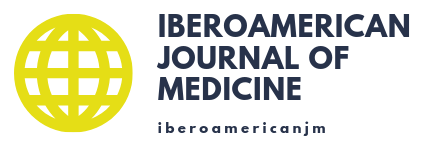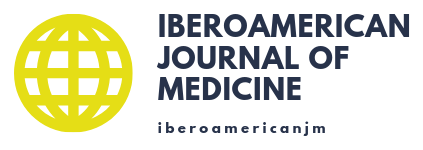Overview on pressure ulcers studies based on bibliometric methods
Resumen de estudios sobre úlceras por presión basados en métodos bibliométricos
Hatice Öntürk Akyüz, Sevil Alkan, Oruç Numan Gökçe
Abstract
Introduction: Pressure ulcers (PU) are a major health problem, causing increased health costs as well as workload of health workers. In this study, we aimed to analyze the developments in PUs and to add perspective to future studies by examining the research articles published on PUs, which is an increasing health problem worldwide.
Material and methods: Bibliometric analysis method was used in this study. The data was obtained by searching the Elsevier Scopus database with using the keywords “pressure ulcer” or “bedsore” or “decubitus ulcer” or “decubitus” or “pressure sore”.
Results: 4,361 articles were analyzed in terms of study criteria. The first article was published in the year 1849 and 52.94 % of articles were published after the year 2011. Most of the articles were written in English (87.6%) language. The majority 29.32%) of articles were from the United States of America (USA). USA, United Kingdom and Japan were the top three publishing countries. Most of the articles were in the area of medicine [n =2896(66.4%)] and nursing [n=1903(43.63%)]. The highest number of articles on PUs were published in the journals of Ostomy Wound Management (n=177), Journal of Wound Care (n=156), International Wound Journal (n=144), Journal of Wound Ostomy And Continence Nursing (n=141) and Journal of Tissue Viability (n=126).
Conclusions: As the number of immobile and debiliated patients increase globally, the publications on PUs seem to be increase too. Studies outside of Europe and the USA should also be supported and the number of publications should be increased, especially from developing countries.
Keywords
Resumen
Introducción: Las úlceras por presión (UPP) son un importante problema de salud, provocando un aumento de los costes sanitarios y de la carga de trabajo de los trabajadores sanitarios. En este estudio, nuestro objetivo fue analizar los desarrollos en UPP y agregar perspectiva a estudios futuros mediante el examen de los artículos de investigación publicados sobre UPP, que es un problema de salud creciente en todo el mundo.
Material y métodos: En este estudio se utilizó el método de análisis bibliométrico. Los datos se obtuvieron mediante una búsqueda en la base de datos de Elsevier Scopus con las palabras clave “úlcera por presión” o “úlcera por decúbito” o “úlcera por decúbito” o “úlcera por decúbito” o “úlcera por presión”.
Resultados: Se analizaron 4.361 artículos en función de los criterios de estudio. El primer artículo se publicó en el año 1849 y el 52,94% de los artículos se publicaron después del año 2011. La mayoría de los artículos fueron escritos en idioma inglés (87,6%). La mayoría (29,32%) de los artículos procedían de los Estados Unidos de América (EE. UU.). Estados Unidos, Reino Unido y Japón fueron los tres principales países editores. La mayoría de los artículos fueron del área de medicina [n = 2896 (66,4%)] y enfermería [n = 1903 (43,63%)]. El mayor número de artículos sobre UPP se publicaron en las revistas de Ostomy Wound Management (n = 177), Journal of Wound Care (n = 156), International Wound Journal (n = 144), Journal of Wound Ostomy And Continence Nursing (n = 141) y Journal of Tissue Viability (n = 126).
Conclusiones: A medida que aumenta el número de pacientes inmóviles y debilitados a nivel mundial, las publicaciones sobre UPP parecen estar aumentando también. También deberían apoyarse los estudios fuera de Europa y Estados Unidos y debería incrementarse el número de publicaciones, especialmente de países en desarrollo.
Palabras clave
References
1. Mervis JS, Phillips TJ. Pressure ulcers: Pathophysiology, epidemiology, risk factors, and presentation. J Am Acad Dermatol. 2019;81(4):881-90. doi: 10.1016/j.jaad.2018.12.069.
2. Kottner J, Cuddigan J, Carville K, Balzer K, Berlowitz D, Law S, et al. Pressure ulcer/injury classification today: An international perspective. J Tissue Viability. 2020;29(3):197-203. doi: 10.1016/j.jtv.2020.04.003.
3. Gül Ş. [Prevention of Pressure Ulcers in Patients Undergoing Surgery]. Hacettepe Üniversitesi Hemşirelik Fakültesi Dergisi. 2015;1(3):54-61.
4. Mervis JS, Phillips TJ. Pressure ulcers: Prevention and management. J Am Acad Dermatol. 2019;81(4):893-902. doi: 10.1016/j.jaad.2018.12.068.
5. Jones W. On The treatment of ulcers by pressure. Lancet. 1849;53(1335):353-4.
6. Bennett G, Dealey C, Posnett J. The cost of pressure ulcers in the UK. Age Ageing. 2004;33(3):230-5. doi: 10.1093/ageing/afh086.
7. Vanderwee K, Clark M, Dealey C, Gunningberg L, Defloor T. Pressure ulcer prevalence in Europe: a pilot study. J Eval Clin Pract. 2007;13(2):227-35. doi: 10.1111/j.1365-2753.2006.00684.x.
8. Edsberg LE, Black JM, Goldberg M, McNichol L, Moore L, Sieggreen M. Revised National Pressure Ulcer Advisory Panel Pressure Injury Staging System: Revised Pressure Injury Staging System. J Wound Ostomy Continence Nurs. 2016;43(6):585-97. doi: 10.1097/WON.0000000000000281.
9. Robson MC, Phillips LG, Thomason A, Robson LE, Pierce GF. Platelet-derived growth factor BB for the treatment of chronic pressure ulcers. Lancet. 1992 Jan 4;339(8784):23-5. doi: 10.1016/0140-6736(92)90143-q.
10. Dealey C, Posnett J, Walker A. The cost of pressure ulcers in the United Kingdom. J Wound Care. 2012;21(6):261-2, 264, 266. doi: 10.12968/jowc.2012.21.6.261.
11. Yager DR, Zhang LY, Liang HX, Diegelmann RF, Cohen IK. Wound fluids from human pressure ulcers contain elevated matrix metalloproteinase levels and activity compared to surgical wound fluids. J Invest Dermatol. 1996;107(5):743-8. doi: 10.1111/1523-1747.ep12365637.
12. Dinsdale SM. Decubitus ulcers: role of pressure and friction in causation. Arch Phys Med Rehabil. 1974;55(4):147-52.
13. Allman RM, Goode PS, Patrick MM, Burst N, Bartolucci AA. Pressure ulcer risk factors among hospitalized patients with activity limitation. JAMA. 1995;273(11):865-70.
14. Blume PA, Walters J, Payne W, Ayala J, Lantis J. Comparison of negative pressure wound therapy using vacuum-assisted closure with advanced moist wound therapy in the treatment of diabetic foot ulcers: a multicenter randomized controlled trial. Diabetes Care. 2008;31(4):631-6. doi: 10.2337/dc07-2196.
15. Brandeis GH, Morris JN, Nash DJ, Lipsitz LA. The epidemiology and natural history of pressure ulcers in elderly nursing home residents. JAMA. 1990;264(22):2905-9.
16. Alkan S, Dindar Demiray EK, Yıldız E, Özlü C. Analysis of Scientific Publications on Acinetobacter bacteremia in Web of Science. Infect Dis Clin Microbiol. 2021;3(1):39-44. doi: 10.36519/idcm.2021.37.
17. Azzaza M, Melki S, Nouira S, Ben Abdelaziz A, Khelil M, Ben Abdelaziz A. Bibliometrics of Tunisian publications in "General Surgery" (Medline, 2009-2018). Tunis Med. 2019;97(7):833-41.
18. Dahdi SA, Ben Abdelaziz A, Baroumi T, Ba O, Diagana M, Dada L, et al. Bibliometry of biomedical scientific publications in Mauritania (Medline:1992-2016). Tunis Med. 2018;96(10-11):834-43.
19. Ostlie DJ, St Peter SD. The current state of evidence-based pediatric surgery. J Pediatr Surg. 2010;45(10):1940-6. doi: 10.1016/j.jpedsurg.2010.05.008.
20. Öntürk H, Dindar Demiray EK, Alkan S. Network analysis of nursing publications in the COVID 19 era. J Clin Med Kaz. 2021;18(4):27-31. doi: 10.23950/jcmk/11037.
21. Yucens M, Aydemir AN. Trends in Anterior Cruciate Ligament Reconstruction in the Last Decade: A Web-Based Analysis. J Knee Surg. 2019;32(6):519-24. doi: 10.1055/s-0038-1655764.
22. Bas K, Dayangac M, Yaprak O, Yuzer Y, Tokat Y. International collaboration of Turkey in liver transplantation research: a bibliometric analysis. Transplant Proc. 2011;43(10):3796-801. doi: 10.1016/j.transproceed.2011.09.081.
23. Ozsoy Z, Demir E. The Evolution of Bariatric Surgery Publications and Global Productivity: A Bibliometric Analysis. Obes Surg. 2018;28(4):1117-29. doi: 10.1007/s11695-017-2982-1.
24. Alkan Çeviker S, Yılmaz M, Uyar C, Dindar Demiray EK. Bibliometric analysis of scientific research on Crimean-Congo hemorrhagic fever in Turkey. D J Med Sci 2021;7(2):97-102. doi: 10.5606/fng.btd.2021.25064.
25. Jiang H, Nong B, Yang L, Zong S, Zhan X, Wei Q, et al. Assessing the evolution of scientific publications in orthopedics journals from mainland China, Hong Kong, and Taiwan: a 12-year survey of the literature. J Orthop Surg Res. 2016;11(1):69. doi: 10.1186/s13018-016-0404-z.
26. Aminian A, Daigle CR, Brethauer SA, Schauer PR. Citation classics: top 50 cited articles in bariatric and metabolic surgery. Surg Obes Relat Dis. 2014 Sep-Oct;10(5):898-905. doi: 10.1016/j.soard.2013.12.021.
27. Železnik D, Blažun Vošner H, Kokol P. A bibliometric analysis of the Journal of Advanced Nursing, 1976-2015. J Adv Nurs. 2017;73(10):2407-19. doi: 10.1111/jan.13296.
28. Blažun Vošner H, Železnik D, Kokol P, Vošner J, Završnik J. Trends in nursing ethics research: Mapping the literature production. Nurs Ethics. 2017;24(8):892-907. doi: 10.1177/0969733016654314.
29. Halfens RJ, Haalboom JR. A historical overview of pressure ulcer literature of the past 35 years. Ostomy Wound Manage. 2001;47(11):36-43.
30. Chen HL, Cai DY, Shen WQ, Liu P. Bibliometric analysis of pressure ulcer research: 1990-2009. J Wound Ostomy Continence Nurs. 2010;37(6):627-32. doi: 10.1097/WON.0b013e3181f90d2b.
31. Gupta S, Cho T. A literature review of negative pressure wound therapy. Ostomy Wound Manage. 2004;50(4A Suppl):6-8.
32. Karasözen B, Bayram ÖG, Zan BU. [Comparison of the WoS and Scopus Databases]. Türk Kütüphaneciliği 2011;25(2):238-60.
Submitted date:
10/20/2021
Reviewed date:
11/12/2021
Accepted date:
11/25/2021
Publication date:
11/27/2021


